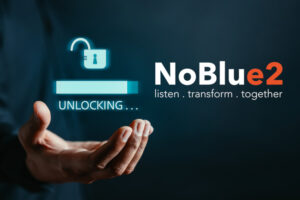The subscription model was pioneered way back in the 17th Century by publishers who sold their periodicals and books on subscription. So, it’s curious that it took until this century for the model to be adopted more extensively.
In the past twenty years, the subscription model has really come into its own. From streaming video to gin boxes through your door, it seems any industry is suitable for it. We’re so attuned to the subscription economy these days that it is probably here to stay. So, could a subscription model be right for your company?
The Benefits of Subscription Models
A subscription model is the ongoing provision of a product or service, typically as a rental rather than ownership. So, you can play a song without owning the album, try a new gin without buying the whole bottle, or use a technology app without buying expensive software. For customers, subscriptions are often much more affordable and certainly more convenient, giving them access to services without owning them.
But how do they benefit business? We’ve written about the benefits of subscription models before. But in summary, they offer a business:
- Recurring revenue and the financial predictability that it brings
- A direct customer relationship that improves your knowledge of your customers and their needs, bringing greater customer loyalty
- An engaged base gives opportunities for regular communication to offer cross-sells and upsells, resulting in higher revenue
- Greater appeal to investors, who value the subscription model
The Drawbacks of Subscription Models
While there are some real benefits to employing a subscription model, there are some caveats to consider too. You need to keep your customer churn rate low. If your product doesn’t steadfastly fit an ongoing need, and deliver excellent value, then your customer attrition rate will be too high and you will continually be searching for new customers to replace the ones that cancel.
Increasingly, customers are looking more closely at their spending. As the subscription economy has grown, customers have added to the number of subscriptions they have. Instead of just Netflix, for example, they may have added Apple TV, Amazon Prime Video, BritBox or Disney+. With people financially struggling – especially like now in the post-Covid economy – they may have to cancel subscriptions. With such a high level of competition, consumers are overwhelmed by choice. But if it’s your product that is the least up to scratch, then it will be your business that loses out.
Then there’s the difficulty of striking the right balance between offering customers a great service and staying profitable. For example, subscriptions with unlimited access to something that has an associated cost are risky. The American subscription-based cinema ticket business MoviePass suffered from just this balancing issue. It seems that customers used the service more than was anticipated, leaving the company in deficit. Despite limiting usage for new customers, it wasn’t enough to stem the losses and the company folded.
Different Types of Subscription Models
The models for each of these types of offering vary only in their terms and conditions; the length of the contract, whether you can cancel without notice or penalty, and whether the payment is flat fee or based on usage or number of users, for instance. Otherwise, they run on the model of charging a recurring dee for ongoing access to the product or service. Monthly paid subscription plans are common, often with a discount for committing to a longer term.
Retail and Consumable Products
Some of the first exponents of the subscription box model were those in the beauty industry, like Birchbox, which supplied boxes of make-up and beauty products on a monthly subscription basis. This has evolved over the past ten years or so to now include boxes for all manner of items – stationery, crafting and art; knitting, sewing and crochet; gin, cheese and chocolate; candles; clothing; fragrance; jewellery; flowers and so much more.
Subscriptions are also seen in the food delivery box sectors too – whether as meal kits, veg boxes or packaged ready meals.
Pretty much any consumer good can be packaged into a box subscription. If you can make the contents appealing and seemingly great value, yet adequately cover your costs, then they are a winner.
Software as a Service
The growth of cloud computing has driven a shift away from packaged software and made the subscription model extremely attractive for software providers. Web-based and app products can be delivered easily and at a low cost. Innovators like Dropbox, Mailchimp and SurveyMonkey all started online. But it didn’t take long before companies like Adobe and Microsoft had switched their offerings to the subscription model too.
The ease of access of technology and software is a big draw. It is simple to deliver the product electronically, it comes pre-configured, customers can manage their own accounts, upgrades and fixes are made automatically in the background and it is easily scalable.
Digital Entertainment
Digital entertainment and streaming service providers, such as Netflix and Spotify have been at the forefront of the subscription economy. Users can access large libraries with thousands of hours of content rather than buying an album or buying or renting a DVD.
It’s not just good for video and music though. Books – both written and audio – can be provided using the subscription model. Kindle and Audible have each carved out a good share of the market. And new players are continually coming along, like UK start-up Perlego, which grants access to hundreds of thousands of academic textbooks on a subscription basis. And of course, newspapers and magazines are often read digitally these days.
Gaming platforms and providers are also increasingly using the subscription method. Instead of buying one-off titles, players can access multiple games. The big console makers all offer their own platform passes: X-Box Live Gold, PlayStation Plus and Nintendo Switch Online. And games manufacturers are getting in on the act too: EA and Ubisoft, for example, each offer monthly subscriptions giving gamers access to all their games.
Not to be outdone, the big internet names have also launched game streaming platforms. Amazon has Prime Gaming and Google has Stadia.
Education and Learning
Digital training courses – for both academic and leisure purposes – lend themselves brilliantly to the subscription model. Platforms like FutureLearn, Thinkific and Teachable offer a wide range of different topics, provided by individuals and businesses that pay to put their courses on the platforms. Acting as a middleman, these platforms benefit doubly: they are paid by both the course providers and the individual subscribers.
Whether you want to learn a language, a craft or a skill, it seems there’s an elearning course available by subscription.
Is The Subscription Model Right for Your Business?
It seems there are few businesses that cannot benefit from subscription models. Whatever your size or industry, and regardless of whether you are a B2C or B2B company, if you can deliver an excellent experience and meet a need at the right price, then the wins are there for the taking.
If you’d like to experience how well our own cloud-based ERP software – NetSuite – can help manage a subscription model for your company, however complex your pricing plans and billing options, contact us today.










